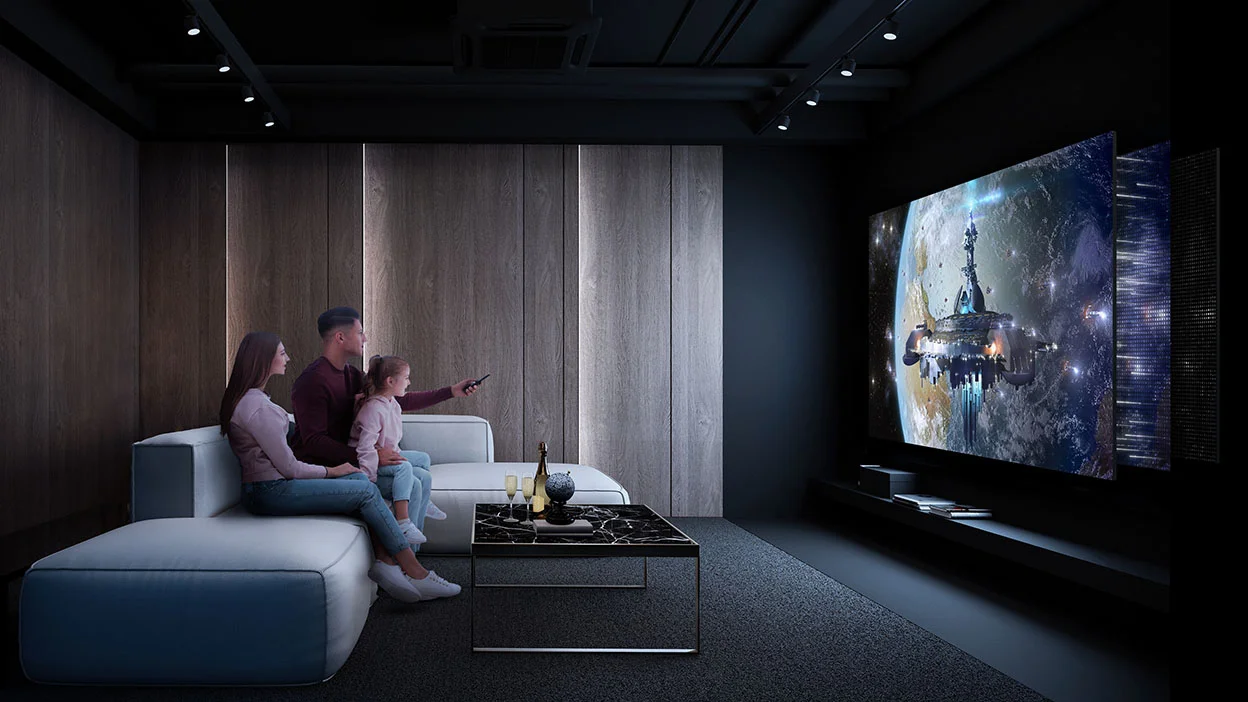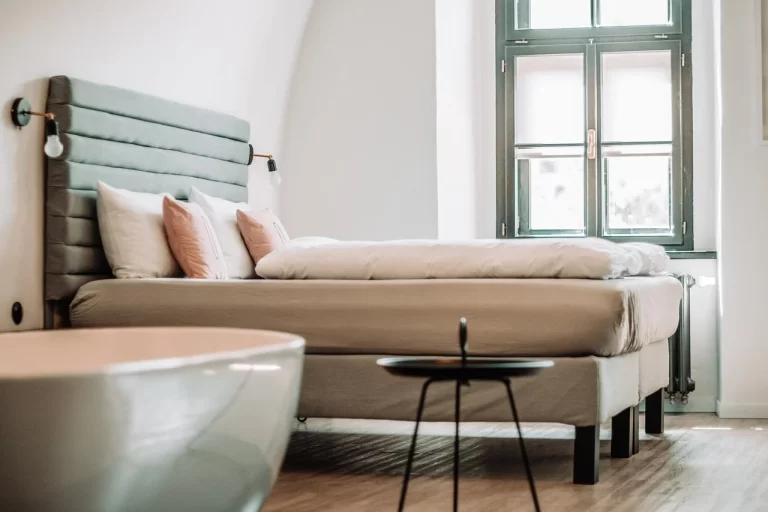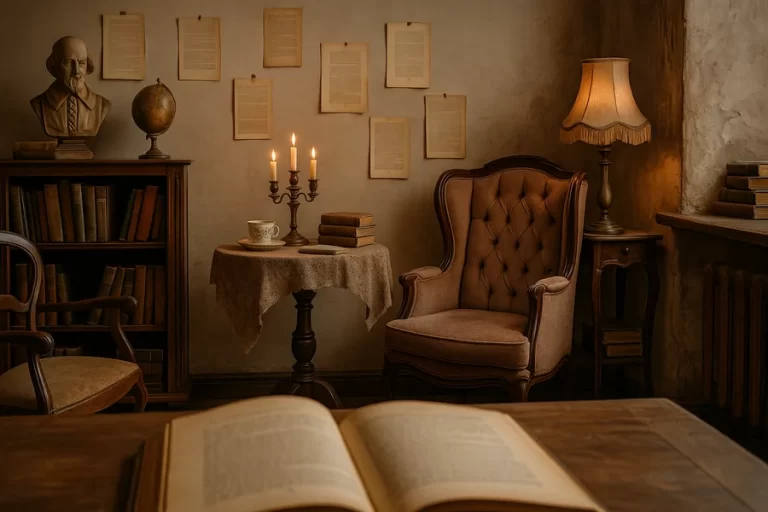Everyone has a favorite movie scene—whether it’s the candlelit kitchen in a Nancy Meyers film, the eclectic charm of a Wes Anderson interior, or the moody, minimalist apartment in a noir thriller. These cinematic spaces captivate not only because of their beauty but because they evoke emotion, memory, and atmosphere.
What if you could bring that same feeling into your own home? Can a living room feel like a movie set? The answer is yes—and you don’t need a Hollywood budget to do it.
Transforming your home into a cinematic space isn’t about imitation; it’s about evocation. It’s about using design to capture the essence of a scene: the lighting, the textures, the storytelling details. With intention and a little imagination, any home can reflect the mood and magic of the movies.
Step One: Identify the Genre of Your Space
Before you pick up a paintbrush or buy another throw pillow, take a moment to ask yourself what type of film your home would be if it were a set. Is it a breezy romantic comedy? A vintage detective thriller? A futuristic sci-fi world?
This genre approach gives you a direction and a design language. A romantic comedy setting might involve soft lighting, plush furniture, and warm tones. A noir aesthetic could lean into sharp contrasts, rich textures, and strategic lighting. Knowing your “genre” helps guide every decision—from wall colors to table lamps.
Cinematic Lighting: The Hidden Star
Lighting is perhaps the most underrated but most transformative element of a movie set. Cinematographers use it to shape emotion, and you can do the same at home. Avoid flat overhead lighting and opt for layered sources that create depth and mood.
Incorporate a mix of:
- Table lamps with warm-toned bulbs for soft pools of light
- Floor lamps to highlight corners and reading areas
- Wall sconces for architectural interest
- Fairy lights or string bulbs for whimsical, romantic vibes
- Candlelight for drama and intimacy
Dimmer switches and smart lighting options can also help you adjust the mood depending on the scene you’re setting—be it a cozy evening or a lively gathering.
Set Design Through Color and Texture
Movies rely on color palettes to communicate tone, era, and character—and you can do the same. Think of the faded mustard and avocado green of The Grand Budapest Hotel, or the cool blues and grays in Her. Each palette tells a story.
Start by selecting 2–3 dominant colors and 2 accent tones. Then bring those shades into walls, textiles, and decor. For example:
- A soft beige and warm peach combination creates a sunlit, nostalgic feel.
- Deep emerald and navy evoke luxury and intrigue.
- Crisp whites with pops of red might suggest a bold, modernist vibe.
Textures deepen the set design even further. Add velvet cushions, linen curtains, leather chairs, or weathered wood to give your space tactile dimension—just as set designers do to make film environments believable and immersive.
Styling with Narrative Objects
A movie set is never random; every item is placed with intention, hinting at character or history. Apply this principle by styling your home with meaningful objects that suggest a story. These might include:
- Stacked vintage books that hint at intellectual curiosity
- Framed letters or notes as art, adding mystery or romance
- A worn leather suitcase repurposed as a coffee table
- An old camera or typewriter as a nod to creative passion
- Vinyl records and classic posters to evoke musical identity
Each item should say something, not just fill space. The goal is to create a visual narrative your guests (and you) will enjoy exploring.
Furniture Placement That Frames the Scene
In film, characters are often framed within doorways, windows, or carefully arranged rooms. Take a cue from this by using furniture placement to frame views and movement. Avoid pushing all furniture to the edges of a room—think in terms of composition.
- Use rugs to anchor and define areas like a “conversation zone” or “reading corner.”
- Float your sofa or chairs to create symmetry and intimacy.
- Place mirrors strategically to expand visual space and reflect light.
You can also use open shelving or room dividers to segment space like movie sets do—allowing transitions from “scenes” like dining to lounging within the same room.
Bring Sound Into the Picture
Sound design is a massive part of the cinematic experience, and it’s often overlooked in home design. A room that sounds as good as it looks enhances immersion.
- Invest in a quality speaker or sound system for ambient music or film soundtracks.
- Use sound-absorbing materials like area rugs, curtains, and upholstered furniture to soften echo and create warmth.
- Create themed playlists based on your desired “film genre”—jazz for noir, orchestral for historical drama, synth for sci-fi.
Even the gentle hum of a record player or the occasional creak of an antique floorboard can add atmospheric texture.
Live in the Scene
Once your space is styled, colored, and lit like your favorite film, remember the final piece: how you live in it. Movie sets are meant to serve story and mood—and your home should too.
- Brew your coffee in a ceramic mug and sip it by a rain-dappled window like in a foreign indie film.
- Read novels under a moody desk lamp, wrapped in a throw, like a character in a literary drama.
- Host a dinner party with candlelight and jazz like a classic European romance.
Living in a cinematic space isn’t about performance—it’s about presence. The beauty of these environments is how they make the mundane feel meaningful.
Design as a Form of Storytelling
Your home doesn’t need a camera crew or director to feel cinematic. What it needs is intention—decisions that are driven by atmosphere, mood, and the kinds of moments you want to cultivate. Just as filmmakers use set design to evoke emotion, you can use color, light, sound, and texture to create spaces that tell a story.
Whether you want to live in a mid-century noir dream, a sunlit Parisian apartment, or the kind of book-filled bungalow you see in indie films, the tools are within reach. Recreating a movie vibe at home isn’t about excess—it’s about awareness. The little details, carefully curated, can turn your home into a space where every day feels like a scene worth remembering.



